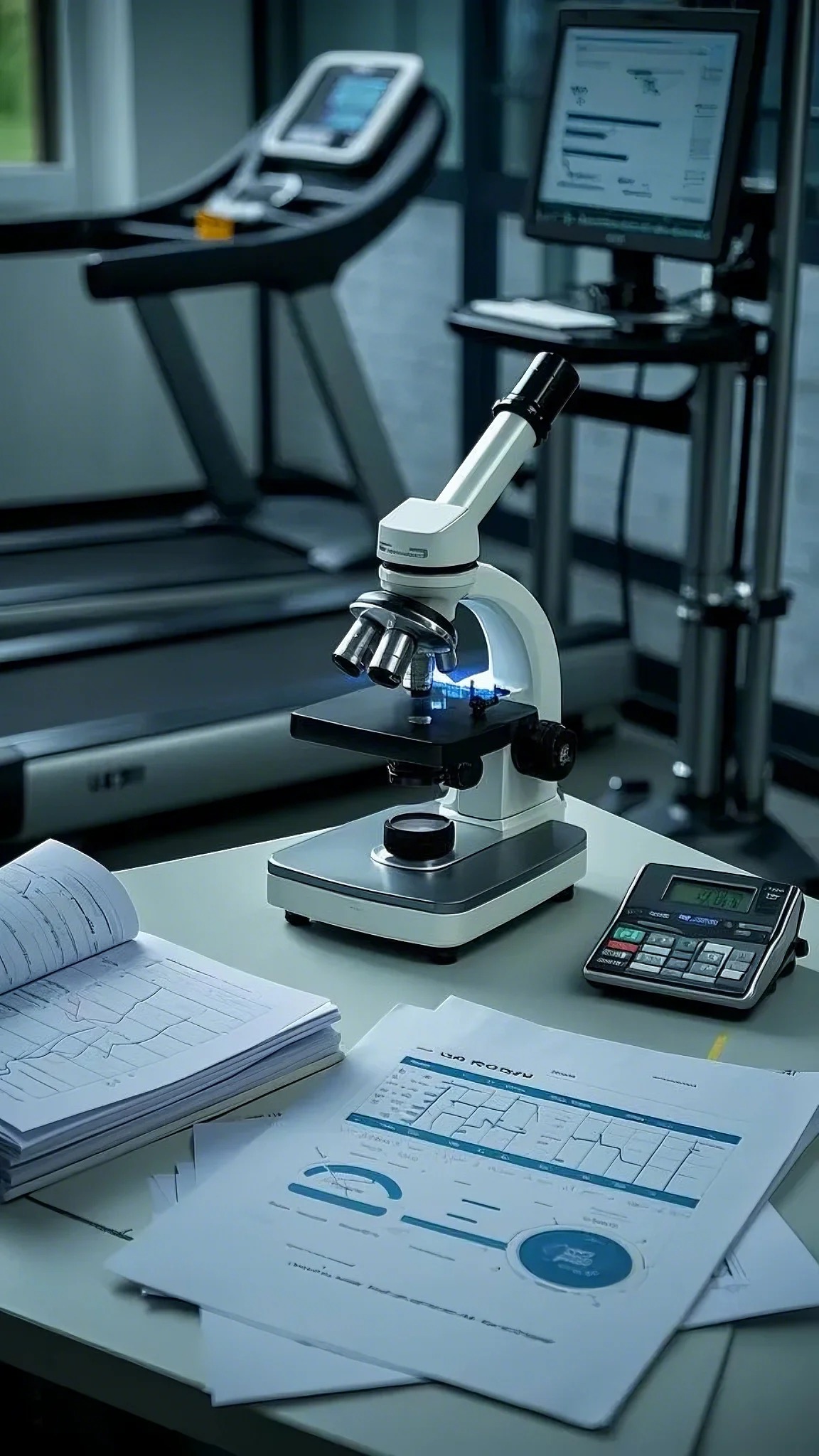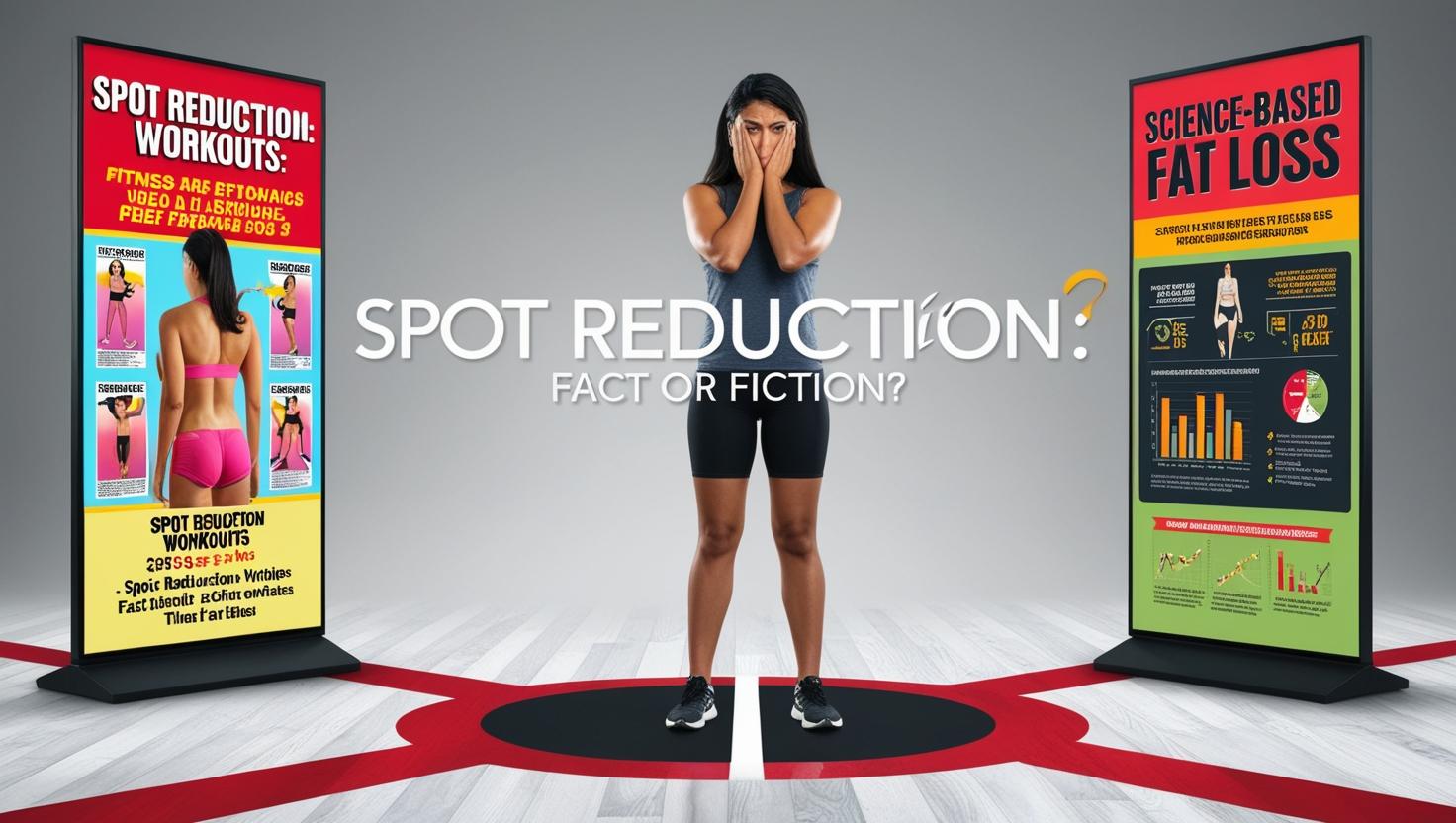Spot Reduction: Fact or Fiction?
Did you know about a study in 1971 by the University of California, Irvine?
It found no significant difference in fat thickness between tennis players’ arms.
This challenges the popular idea of spot reduction…which is the belief you can lose fat in certain areas by exercising them. It’s a big topic in fitness, where many hope focused workouts will eliminate stubborn belly fat!
But is this idea just a myth?
Perhaps it’s something promoted by fad diets and fitness programs. Let’s have a look at the science behind fat loss myths and check out body contouring techniques. We’ll also learn about the biological factors that influence where and how we lose fat. For many trying to change their bodies, knowing what’s real and what’s not is vital.
Join us as we find out if we should forget this theory or, maybe, use a combined approach to exercise and diet as the best way to meet fitness goals.
Understanding the Concept of Spot Reduction
Many of us have tried to lose weight in specific body parts by focusing in specific areas.. This idea suggests that certain exercises can trim fat in chosen body spots. For example, lots of us think doing lots of sit-ups will get rid of belly fat.
What is it?
It’s the thought that we can target fat loss in certain areas by exercising those parts. People believe that exercises like leg lifts or tricep dips can slim down those specific spots. However, studies show fat loss happens all over our bodies, not just in one place. Those hoping for quick fixes in certain areas might be disappointed.
Common Misconceptions about Spot Training
There are many myths about spot training. One such myth is that building muscle in one area will reduce fat there too. But, studies show this isn’t true. For instance, arm muscle growth didn’t reduce arm fat. Another study showed six weeks of ab workouts didn’t cut belly fat. This tells us that losing fat depends on how much energy we use and our genes.
- Genetic factors: Our genes largely decide where our body stores fat. It’s different for everyone.
- Metabolic activity: Abdominal fat burns off easier than fat in other places for some.
- Comprehensive fitness programs: A mix of cardio, strength, and a good diet works best for losing fat.
- Scientific consensus: Experts agree that you can’t pick where to lose fat on your body.
The Science Behind Fat Loss
Understanding fat loss involves a look at biology, focusing on how we burn energy and the role of hormones. When you become more active, your body’s energy use goes up. This means you’ll burn more calories during workouts, leading to more fat loss. The key is simple: use more calories than you eat. But, there’s a lot more to it beneath the surface.
Energy Expenditure and Body Fat
Working out is key to losing fat because your body uses stored fat for energy. This helps reduce overall body fat. Important studies back this up. For example, a study with 16 women over 12 weeks showed fat loss with no big weight changes. It proves that regular workouts lead to fat loss, even if it’s not just in certain areas.
The Role of Hormones and Lipolysis
Hormones play a big role in fat loss by starting lipolysis. This is when exercise promotes hormones to break down stored fats for energy. The process teaches us that losing fat is about keeping a steady metabolism, not just targeting spots. However, research shows that spot lipolysis is minimal. It mostly affects fat near working muscles and only sheds a few grams.
The Influence of Exercise Intensity
How hard you exercise is key to losing fat. High-intensity workouts like interval training or Tabata help burn calories even after you’re done exercising. These intense exercises use many muscle groups and burn more calories than workouts targeting one area. Also, exercises for specific areas like the core are good for strength, but they don’t burn enough calories for fat loss. The best approach is doing exercises that work out the whole body. These improve blood flow and break down fat better than focusing on one spot.

Why Spot Reduction Doesn’t Work
Trying to lose fat in specific body areas often ends in disappointment. This happens because of how our bodies work and our genes. Our genes play a big part in where we store fat and lose it.
Genetics and Fat Distribution
About 60% of where our body stores fat comes from our genes. This means some people might store fat more in certain areas. Men often gain weight around their stomach, which creates an “apple” shape. Women, however, usually gain weight around their hips and buttocks, leading to a “pear” shape. Our genes clearly affect how we look and make losing fat in certain places hard.
The Effect of Gender and Age on Fat Loss
Gender and age also play roles in how we lose fat. Women keep fat in areas important for having children. As we get older, our metabolism slows down and hormone levels change. This can mean more belly fat, especially during middle age. Younger people might lose fat easier than older people, which can be frustrating. This shows that not being able to target fat loss isn’t about effort but about our bodies’ unique makeup.
Effective Strategies for Fat Loss
Let’s set aside myths on spot reduction. Turning our attention to effective fat loss is better. Pairing a balanced diet with regular workouts is essential. Knowing what to eat before exercising can greatly benefit you.
Importance of a Balanced Diet
For effective fat loss, it’s important to eat well.
- Choose whole foods full of nutrients.
- Add a mix of carbs, proteins, and healthy fats to your meals.
- More soluble fiber can fight belly fat. Just 10 extra grams can make a big difference over time.
- Watch out for sugar. Too much can lead to more belly fat.
Integrating Cardio and Strength Training
Exercise is a must for losing fat. A mix of cardio and strength training works best. Here are some tips:
- Try high-intensity cardio to cut belly fat faster.
- Do exercises like squats and deadlifts to burn more calories.
- Mix resistance and aerobic workouts to increase metabolism and build muscle.
A consistent workout plan improves fitness and helps in slimming down. A balanced diet and smart workout plans are vital for fat loss. For more info on how to lose weight effectively, take a look at this article on targeted weight loss techniques.

Alternatives to Spot Reduction Techniques
If you want to get in shape but doubt spot reducing actually works, there’s good news. There are many ways to contour your body. Traditional exercises might not target fat in certain spots. But, a well-rounded routine can make a big difference. For example, a study from Duke University showed that people doing cardio, like using treadmills and bikes, lost about 8% of their belly fat. This shows that focusing on overall fitness works!
Changing what you eat can also help you lose fat. Studies show that eating around 30% of your calories from protein helps you eat 441 calories less per day. Making these smart food choices can lead to a healthier lifestyle. It can also help you lose fat all over your body, not just in specific spots.
Advanced methods like CoolSculpting are becoming popular for a reason. CoolSculpting is approved by the FDA for use on the belly and sides. It can reduce fat by 20-25% with each treatment. Techniques like freezing fat cells and ultrasound can be good for those looking for targeted fat loss. Remember, the goal is to build lasting habits and keep active. It’s not just about fixing certain areas.
